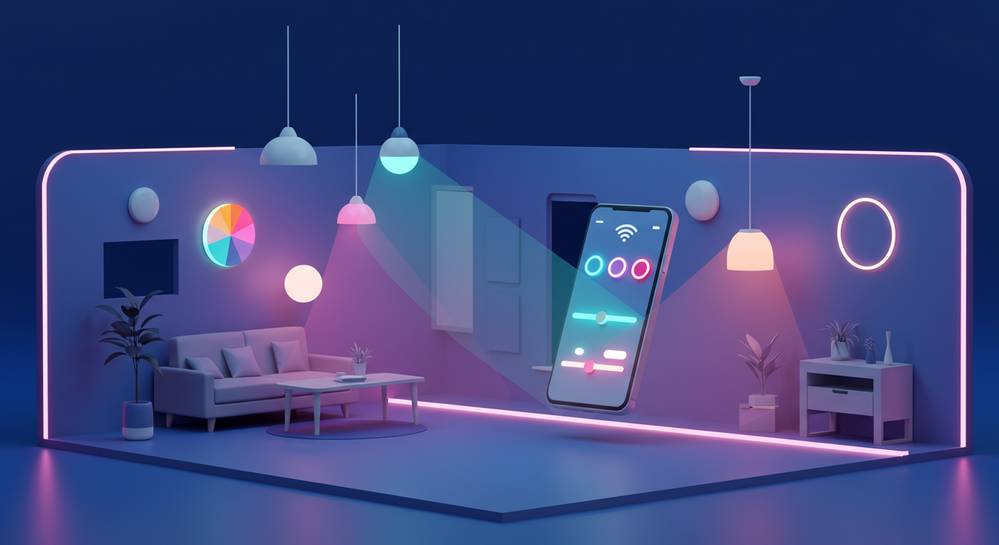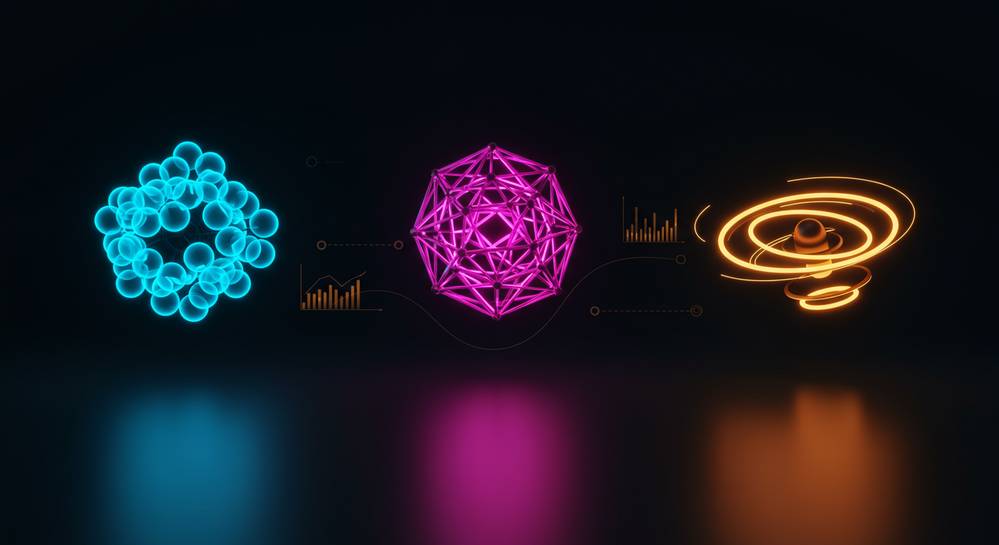Upgrading to a smart lighting system can transform your home’s atmosphere and functionality, but navigating the options can be overwhelming. The best smart lighting systems for homes are not one-size-fits-all; they are tailored to your lifestyle, budget, and existing smart home ecosystem. This guide simplifies the process by breaking down the top contenders and key features, ensuring you can make a confident and informed decision for a brighter, smarter home.
What defines a great smart lighting system

A great smart lighting system is more than just a light bulb you can control with your phone. It is a cohesive ecosystem that enhances your home’s ambiance, convenience, and efficiency. The best smart lighting systems for homes excel by seamlessly integrating several key components and features that work together harmoniously. This integration is a core principle of modern IoT home automation, turning a simple utility into a dynamic experience.
Key pillars of a smart lighting ecosystem
The best systems are built on four essential pillars that guarantee a superior user experience. These elements separate a basic setup from a truly intelligent one. They ensure reliability, ease of use, and deep customization that adapts to your lifestyle. A system lacking in any of these areas will ultimately feel incomplete and frustrating to use on a daily basis.
- Connectivity and Reliability: A system must be responsive. Whether using a dedicated hub like Zigbee for rock-solid stability or direct Wi-Fi for simplicity, your lights must react instantly every time.
- Intuitive Control: Effortless management is non-negotiable. This means a clean mobile app and flawless integration with major voice assistants like Amazon Alexa, Google Assistant, and Apple Siri.
- Advanced Automation: The ability to set schedules, create custom scenes for activities like movies or reading, and use geofencing to trigger lights upon arrival is fundamental.
- Light Quality and Versatility: Top-tier systems provide a full spectrum of vibrant colors and a wide range of white temperatures, from cool, energizing light to a warm, relaxing glow.
Comparing the top smart lighting systems

Choosing the right brand is a critical step. Each ecosystem offers unique strengths in product variety, features, and price. Here is a breakdown of the leading contenders for the best smart lighting systems for homes to help you decide which is best for your home.
Philips Hue
Philips Hue is the benchmark for reliability. Its dedicated Hue Bridge creates a stable Zigbee network that does not congest your Wi-Fi. Despite a higher cost, it offers unmatched performance, the widest product range available, and seamless integration with all smart platforms.
LIFX
LIFX delivers exceptionally bright and vibrant colors without a hub. Bulbs connect directly to Wi-Fi, simplifying setup for beginners. This is perfect for starting with just a few lights, though be aware that many devices can strain your home network.
Nanoleaf
Nanoleaf treats lighting as decor. It specializes in modular wall panels that create stunning, interactive art, making for some cool home automation ideas. It also supports the next-gen Thread network for improved speed and reliability.
Wyze
For those on a budget, Wyze offers incredible value. Its products provide reliable core features like color control and scheduling at an unbeatable price. While lacking premium integrations, it delivers excellent performance for the cost, making smart lighting accessible.
How to choose the right system for you

The best system is the one that fits your specific needs, budget, and existing technology. Finding the best smart lighting systems for homes requires a personal evaluation. Before making a decision, consider these critical factors to ensure you select a system you will love for years to come. A thoughtful choice now prevents frustration later.
Factors to consider when choosing your system
- Ecosystem Compatibility: Ensure your chosen system integrates smoothly with your preferred voice assistant, whether it is Amazon Alexa, Google Home, or Apple HomeKit, for a unified smart home experience.
- Hub vs. Hub-less: A hub-based system offers superior reliability on a dedicated network. Hub-less systems are simpler to set up but can congest your Wi-Fi as you add devices, one of the potential undefined.
- Room and Purpose: Match the light to the room. A living room may need versatile color bulbs for entertainment, while a kitchen requires bright, functional white light for tasks.
- Budget and Scalability: Define your initial budget but also consider the long-term cost of expansion. Some systems are affordable to start but offer fewer options for future upgrades.
Unlocking advanced features and integrations
Modern smart lighting goes far beyond simple on and off commands. Once your basic setup is complete, you can unlock a new level of home automation. The best smart lighting systems for homes offer advanced features for entertainment and convenience, transforming how you interact with your space. These capabilities are what truly define a modern smart home experience.
Dynamic scenes and entertainment sync
Bring your media to life by syncing lights with music, movies, or games. Top systems can mirror screen colors or pulse to the beat of a song. This creates a deeply immersive entertainment experience. Many apps also offer dynamic scenes that cycle through complementary colors, like a flickering fireplace or a calming ocean wave effect.
Integrating switches and sensors
Extend smart control throughout your home. Smart motion sensors can automatically turn lights on when you enter a room and off when you leave. This saves energy and adds convenience. Smart plugs can incorporate traditional lamps, while wall switches provide familiar physical control that guests can use without needing an app.
Creating powerful automations
The true power is unlocked through automation. Create a “Good Morning” routine that simulates a sunrise by slowly brightening your lights. A “Goodbye” routine could turn off all lights and adjust the thermostat with one command. These custom sequences make your home work for you, simplifying daily tasks.
Choosing the right smart lighting is about finding the perfect balance of features, compatibility, and budget for your home. Whether you prioritize the robust ecosystem of Philips Hue, the vibrant colors of LIFX, or the creative designs of Nanoleaf, there is a solution to elevate your space. Invest time in planning your setup to build a system that is both beautiful and intelligent. For more expert guides on smart home technology, explore everything on Efficient Home Goods.